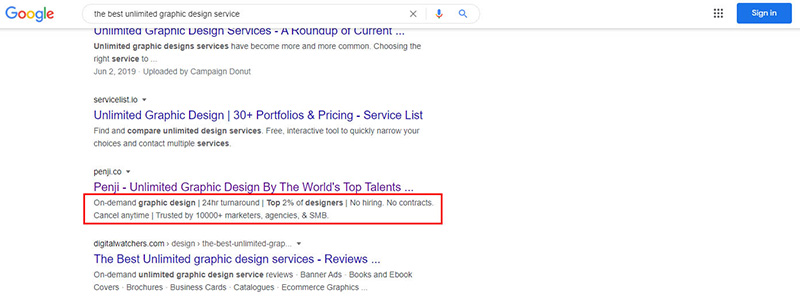15 Jan

Ever wonder why your blogs aren’t getting the right amount of views and engagement? Do you find it hard to make them rank in Google searches? This is one of the most frustrating aspects of content marketing, and you’re not alone. Many businesses and marketers face this challenge. We here at Content Fuel have helped numerous blogs improve their Google ranking. Here are the fool-proof hacks that we follow to a tee ourselves.
Understand Google’s Ranking Algorithms
Before going into battle, you need to understand your opponent first. It used to be that ranking on the world’s number one search engine was so easy. A few updates on their algorithms every year was enough. Today, there are about a thousand changes yearly.
But, don’t take it to heart, nobody we know has these written in memory. It’s practically impossible, and there are some you can actually ignore. Plus, these algorithms are always changing. You need to use your best judgment and always be on the lookout for what’s most vital.
How do you keep track? You can use Moz’s Google Algorithm Update History that has a neat timeline of all the changes. Of course, Google won’t leave you in the dark about this. Check out Google Search Central to learn more.
Thorough Keyword Research
Using relevant keywords or phrases is great in placing you in front of the right people. Keywords are SEO essential, although some believe that they’re no longer as important as before. Use keyword research tools such as Google Keyword Planner or SEO Book’s Keyword Tool.
Keyword stuffing is frowned upon now and has never been a good SEO practice. We suggest using long-tail keywords in your blog posts instead. Make sure that these phrases are in tune with your readers’ intent.
Also, use commercial keywords alongside informational ones. Here are some examples of informational keywords:
- how to make homemade vegan burgers
- how to resize a picture on Photoshop
As you can see, these keywords are looking for information, not necessarily ready to buy something. Now, take a look at examples of commercial keywords and see the difference::
- top ten content writing services
- best vegan restaurants in NYC
On-Page SEO
Put your keywords to better use by including them in strategic locations throughout your blog post. These areas are as follows:
- URL
- Title tag
- Header tags (H1, H2, H3)
- Alt tags (images and captions if possible)
- Meta description
If you’re still unaware, Google is capable of detecting the entire context of your article. Ensure that your keywords and phrases are relevant. For this, you need to focus on a topic rather than a specific keyword.
Maximize the Use of Meta Descriptions
Speaking of meta descriptions, they are an excellent way to help with your Google ranking. These are the blocks of texts that people see on searches that describe your blog content. If you don’t add them, Google will randomly include a snippet of your article, which may not satisfy the searcher’s purpose.

Make it engaging and compelling by answering the readers’ intent. See the example below of a good meta description.
A Mobile-Friendly Site
The convenience of mobile phones has made them the top choice for 66% of online shoppers. Because of this, Google ranks mobile-friendly sites first. Make sure that your site has a responsive design, using a single URL instead of two. This helps Google rank your blog accordingly instead of being confused at two.
Link Internally
To show Google the validity and relevance of your content, add inbound links to your articles. Look for articles or blog posts that are related to what you want to rank. This hits two birds with one stone.
First, Google will see your blog as a provider of useful information. Then, you’re “marketing” your other articles to your readers. This will also help keep your visitors stay longer on your website.
Regularly Update Your Content
Give new life to outdated content and make them relevant again. If an article is already past its time, it’s okay to get rid of them. Articles with product information or statistics may be hard to update. It’s better to just delete them and make way for newer ones.
For those that still have some use in them, you can always repurpose them, especially if their metrics are good. New content may take time to appear on searches, but old articles are already out there. All they need is some new facts to bring them up to date.
Use Images in Your Blog Posts
Using images can significantly help with Google ranking. And this entails not only adding pictures here and there. Images can be a great outlet to optimize your blog by adding descriptive image alt texts.
Google doesn’t actually “see” those images but can read alt image texts. This is especially helpful when searchers use the image search of Google. This is also good for providing a good experience, especially for users with poor vision or screen readers.

So, instead of using “IMG429578” as the image name, use “cat with shirt.”
Write Guest Blogs
Search for websites and other media that would let you write for them. Look for opportunities for guest blogging and submit your content. This will help you get links to your blog posts, and these links can help you get higher Google rankings.
Check Your Website Speed
This may not be directly related to writing content, but it’s equally important. According to Think with Google, the probability of bounce increases by 32% as page load time goes from 1 second to 3 seconds. With the human attention span lessening as time goes by, the slower your site speed gets, the fewer conversions it gains. Google’s PageSpeed Insights can help you with this.
Final Thoughts
Creating an effective content marketing strategy can be time and energy-consuming. Don’t let your efforts go to waste by ensuring that your blog posts get top spots on Google ranking. Follow these fool-proof hacks, and in time, you’ll see your ranks improve.










